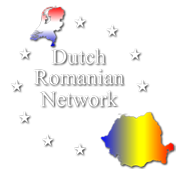Newsletter 28 January 2022

Romanian Business Day postponed to Thursday 14 April 2022
As announced in our December newsletter, we would consider whether the provisional date of February 10 next could be maintained. And three times it is a charm, given the Corona vicissitudes, we have come to the conclusion that we have to postpone the Romanian Business Day until Thursday 14 April.

Of course, the situation in Romania also plays a restrictive role, which means that we have to postpone things.
Incidentally, it will take place unchanged on the beautiful centuries-old family estate De Heerlijkheid Mariënwaerdt in Beesd (Betuwe). Although we do not venture into weather forecasts, there is a good chance that we will also be able to make use of the spacious terrace and the outdoor spaces that the Mariënwaerdt offers at its locations.
The previously established program will largely be maintained and updated where necessary.
We will keep you informed!
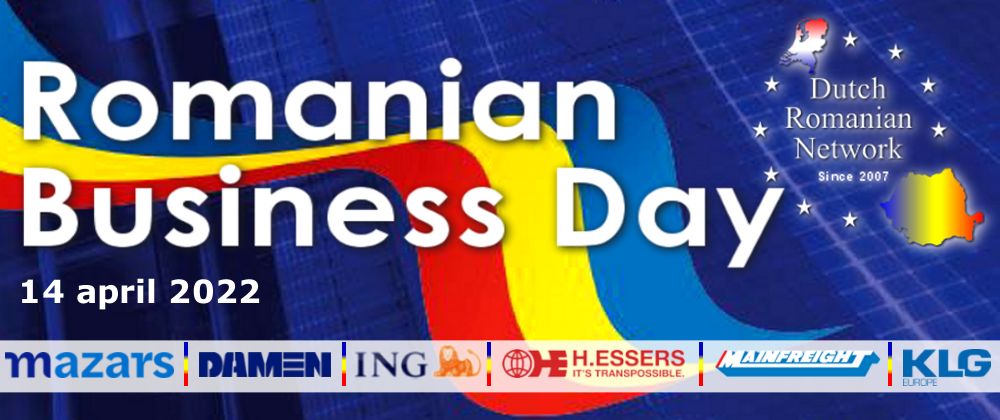
We have also planned two other network meetings for the first half of the year. For example, a so-called Expert Meeting that is mainly aimed at SMEs and/or start-ups. We are regularly confronted by our members with the fact that Romania has very different requirements for the administration of a company than in the Netherlands. We have also experienced that the Romanian legislation has not yet been adapted to EU legislation on a number of points, which also leads to problems. Fortunately, we have experts in-house and they indicate that the accounting systems in the Netherlands and Romania each have their own system and are not compatible. This makes overview and control very difficult.
What if you introduce a method with which you can export the accounting from any program, then adjust the format of the data (which is called data-enrichment) after which you are able to simply import the entire accounting into your Dutch accounting program. you suddenly see at transaction level what is happening in your Romanian branch.
We will also provide you with further information about this Expert Meeting.
Economic Outlook 2022 for Romania
Also this year, ING Romania’s Chief Economist Valentin Tataru made his economic forecasts available.

Macroeconomic aspects are of course discussed, but also a translation to the economic sectors of the business community. Trends supported by figures are clearly indicated. Just to name a few keywords, such as slower growth and higher inflation. GDP: strong growth, driven by both consumption and investment Inflation: energy and 2nd round securities will push inflation above 8.0% Labor market: close but not yet pre-pandemic levels Macro outlook:
good recovery, but Omikron can slow momentum. En passant attention is quite rightly drawn to political instability. Internally, the situation seems to us (DRN) to be reasonably stable and clear, but recent (external) geopolitical developments are not predictable at the moment’.
It can be a tool for entrepreneurs to consider new investments or opt for a status quo.
You can view the full report by clicking here .
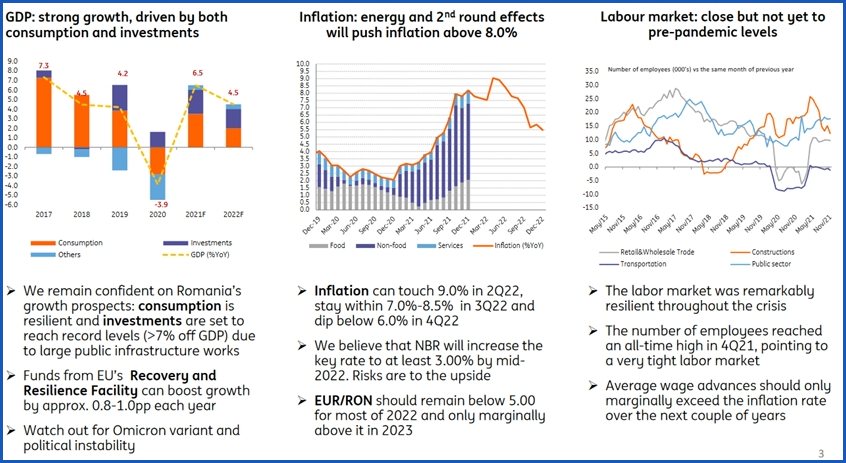
NB In the course of 2022, access to such studies, market data and surveys stored in the DRN Knowledge Base will only be accessible to members.
Banca Transilvania – Macroeconomic Outlook Romania 2022
We are approaching the end of another atypical economic year, marked by the persistence of the health crisis, the recovery of the economy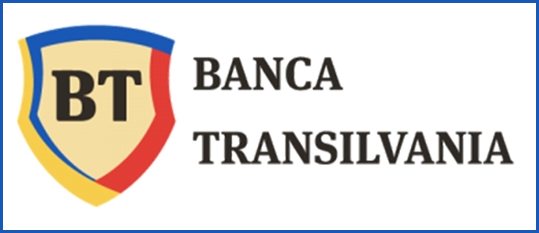 and the accumulation of challenges, including intensifying inflationary pressures, rising commodity prices and political tensions. However, according to a report by Banca Transilvania, the Romanian economy has shown resistance to the pandemic and the effects of this health crisis (unequaled globally in the last century), as well as to the series of adjacent challenges this year. This resilience of the domestic economy is mainly determined by the contribution of improving factors of production to the potential annual GDP dynamics, according to econometric estimates .
and the accumulation of challenges, including intensifying inflationary pressures, rising commodity prices and political tensions. However, according to a report by Banca Transilvania, the Romanian economy has shown resistance to the pandemic and the effects of this health crisis (unequaled globally in the last century), as well as to the series of adjacent challenges this year. This resilience of the domestic economy is mainly determined by the contribution of improving factors of production to the potential annual GDP dynamics, according to econometric estimates .
For 2022, they expect the Romanian economy to evolve slightly faster than its potential, at 5.2%, but slowing compared to the momentum of 2021 (6.2%), according to the bank’s experts.
This scenario is supported by the favorable outlook for productive investment, propelling other components of GDP.
 For example, the engine of the economy could accelerate from 7.6% in 2021 to 10% in 2022, amid the low level of the real cost of financing and implementing programs launched by the European Union after the health crisis (Next Generation and the Multiannual Financial Framework 2021 – 2027). The accelerated growth of productive investment will help improve the labor market environment – the average annual unemployment rate will fall from 5.2% in 2021 to 4.8% in 2022. Under the central scenario, private consumption (the main component of GDP) could fall from 6.9% in 2021 to 5.5% in 2022, an evolution influenced by the disappearance of the base effect (determined by the constraints have been introduced to combat the health crisis). Public consumption is seen to accelerate from 0.3% in 2021 to 3% in 2022, an evolution that is strongly influenced by the implementation of the National Recovery and Resilience Programme. On the other hand, at the level of net foreign demand, the annual growth of exports and imports is expected to slow to 4.5% and 7.2% respectively in 2022 due to the disappearance of the base effect generated by the introduction of restrictions .
For example, the engine of the economy could accelerate from 7.6% in 2021 to 10% in 2022, amid the low level of the real cost of financing and implementing programs launched by the European Union after the health crisis (Next Generation and the Multiannual Financial Framework 2021 – 2027). The accelerated growth of productive investment will help improve the labor market environment – the average annual unemployment rate will fall from 5.2% in 2021 to 4.8% in 2022. Under the central scenario, private consumption (the main component of GDP) could fall from 6.9% in 2021 to 5.5% in 2022, an evolution influenced by the disappearance of the base effect (determined by the constraints have been introduced to combat the health crisis). Public consumption is seen to accelerate from 0.3% in 2021 to 3% in 2022, an evolution that is strongly influenced by the implementation of the National Recovery and Resilience Programme. On the other hand, at the level of net foreign demand, the annual growth of exports and imports is expected to slow to 4.5% and 7.2% respectively in 2022 due to the disappearance of the base effect generated by the introduction of restrictions .
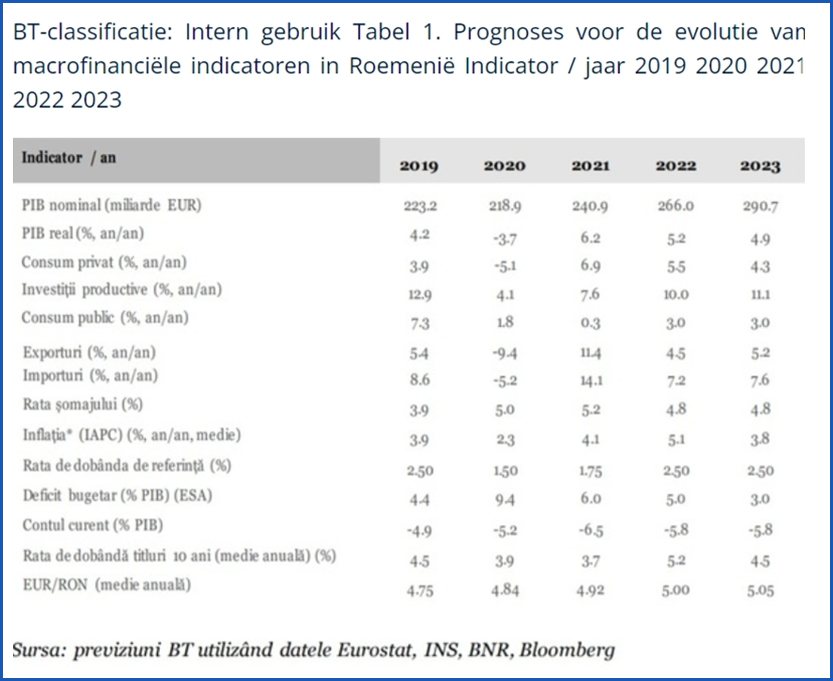
Consumer prices (according to the harmonized EU index) are expected to accelerate the average annual rate from 4.1% in 2021 to 5.1% in 2022, driven by recent supply shocks, in a context characterized by post-market pandemic economic recovery. However, the scenario foresees the slowdown in the annual consumer price dynamics from the first part of 2022 and the convergence towards the level of BT classification: internal use envisaged by the National Bank of Romania until the end of 2023, evolution determined by the dissipation of the supply of shocks and measures taken by the central bank (post-pandemic money cycle started in 2021). In our central scenario, we expect the NBR to continue this cycle into 2022, by raising monetary policy rates and widening the interest rate corridor towards the standing facilities around the reference rate. For the 10-year government bond yield (barometer of the cost of borrowing in the economy), the bank estimates an average annual growth rate of 5.2% in 2022 (from 3.7% in 2021), based on the monetary policy outlook (US and Romania) and the forecast for the annual pace of nominal GDP.
Agri sector
New accelerator for CEE Agritech companies
Agricover, together with SeedBlink and Microsoft, is launching Nextcelerator, a new digital accelerator designed to help agritech start-ups drive innovation in the agricultural sector in CEE.
Agricover Group, the main player in Romanian agribusiness, active for over 20 years in agri-business, agri-finance and agri-tech, in collaboration with SeedBlink, the European investment platform for tech startups, and Microsoft’s branch dedicated to the supporting innovative startups, are looking for innovative companies that meet the needs of the industry.
Nextcelerator – Launched on December 20, the Digital Agriculture Hub is open to entrepreneurs in the AgriTech sector with an early stage startup founded in CEE, which has already tested MVP and growth plans. The program will use mentoring sessions to diagnose the startups’ gaps and opportunities and then deploy appropriate support mechanisms in the form of training, business planning, mentorships, peer learning and introduction to agriculture.

The overall aim of this program is to develop the market-ready capacity of agritech startups and entrepreneurs in Central and Eastern Europe so that they have greater potential to generate sustainable income and connect them with growth capital investment partners to pursue their growth plans.
The selected startups will have access to 4 weekly one-on-one mentoring sessions focused on entrepreneurial skills such as developing a business model, financing a business and planning its launch, as well as a series of unique masterclasses tailored to the needs of the company. startup. Topics can range from selling to farmers and working with partners to developing new technologies and artificial intelligence in agriculture.
Liviu Dobre, General Manager Agricover Holding: “Romania is one of the top countries of the European Union from an agricultural production perspective, with significant untapped growth potential. Future agriculture will undoubtedly be sustainable and environmentally friendly, and the adoption of digital technology is an important transformation factor. 2021 was a good year for agriculture and agribusiness in general in Romania and all prospects point to sustainable growth through technology – therefore closer collaboration between agribusiness experts, tech experts and investment funds can stimulate and support a new generation of AgriTech startups . Agricover’s partnership with SeedBlink and Microsoft provides AgriTech companies with unparalleled early-stage access to business support, expertise, facilities, research and know-how, and we can’t wait to get started.”
“Clearly, we can all afford – not just for rural communities, but for society as a whole – to move away from agriculture digitally. The conversations we have with agricultural customers today are much the same as they were a few years ago: how can they reduce costs, improve efficiency and create new jobs by using the right tools. Agriculture is radically transforming and has the potential to address many global sustainability and productivity challenges through technology. said Bogdan Putinică, General Manager, Microsoft Romania.
Large orders from chip factories for APH from Heerenveen
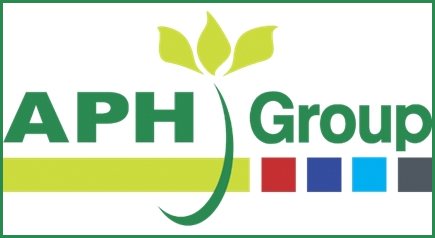 APH Group recently won several major contracts for the supply of machines for three chip factories in China, Romania and Saudi Arabia. APH will supply storage, laundry and sorting installations for the factories. In Romania one is located in Târgu Secuiesc a town in the district of Covasna, in Szeklerland.
APH Group recently won several major contracts for the supply of machines for three chip factories in China, Romania and Saudi Arabia. APH will supply storage, laundry and sorting installations for the factories. In Romania one is located in Târgu Secuiesc a town in the district of Covasna, in Szeklerland.
For a large potato producer and processor in China, the company will install a bunker sorting complex and a large storage facility. “The consumption of French fries is on the rise in China, so that our customer has chosen to invest further in this segment of the market by expanding the French fries production,” said Steven Koop, sales manager engineering at APH Group in a press release. . In Romania and Saudi Arabia will supply the company with part of the machines for two new chip factories to be built. According to APH Group, these are the first chip factories in both countries.
Saudi Arabia will supply the company with part of the machines for two new chip factories to be built. According to APH Group, these are the first chip factories in both countries.
The installations and production systems that APH exports to the three countries are made by the Dutch suppliers Tummers, Omnivent, Miedema and Wevano.
As of January 1, the Frisian APH Group has taken over the Russian and Ukrainian activities of Agri 2.0. In a press release, the exporter and distributor of machines for the potato and vegetable sector says that the acquisition fits in with its strategy to further strengthen and expand its leading position, and to tap into new market segments and crop groups.
APH from Heerenveen will be machines and installations of Dutch manufacture, it is a boost for the Dutch manufacturing industry. APH Group is the world’s largest dealer of potato and vegetable equipment. It has sales and service centers in many countries. APH Group has an important position in the market as an integrator for sorting, washing and packaging lines for potatoes and vegetables. For more information: marketing@aph.nl
DN Agrar Group takes over another dairy company
The Dutch group DN Agrar Group SA, controlled by the de Boer family (member DRN Task Force Agri & Food), the largest milk supplier to the Romanian factories of the French Lactalis, took over the entire Apold cow farm in Alba County. To execute the transaction, DN Agrar borrowed 13.8 million euros from ING Bank.
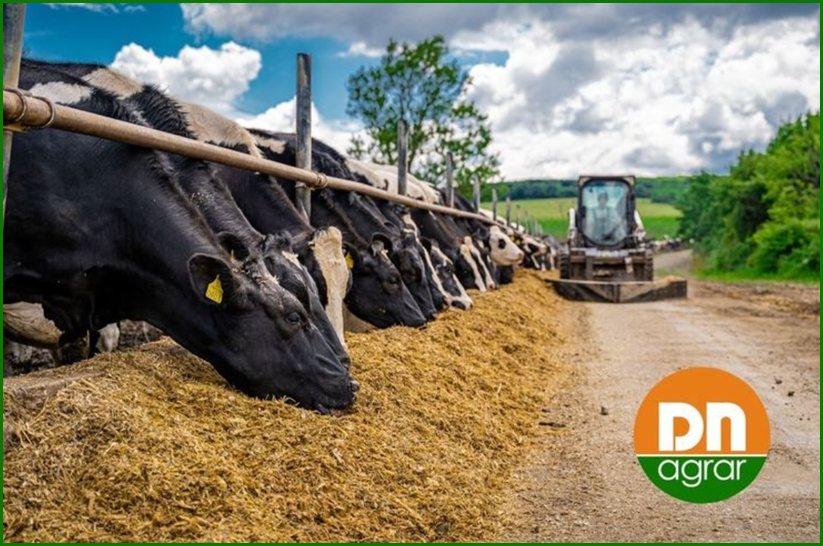
The main goal after the acquisition of farm Apold is to increase the milk production capacity of the farm by 50% by the end of this year. Recently, DN Agrar Group also acquired the company Lacto Agrar from Alba Iulia. DN Agrar is a group of companies active in areas such as animal husbandry, agricultural production, agricultural services, logistics, transport, tourism and business and management consultancy services. Last year, the group raised 24.8 million lei from investors through a private placement.
Maritime Sector
Damen buys Skoonbox to reduce shipyard emissions
Damen Shipyards Group has acquired the Skoonbox from Skoon Energy. The world’s first maritime-certified, multi-deployable battery container will be used to supply sustainable power at our own yards for applications where diesel generators or marine engines are currently mainly used. This first 20-foot container is to develop into Damen’s sustainable battery network for mobile and temporary applications, which can eventually be used for customers worldwide.
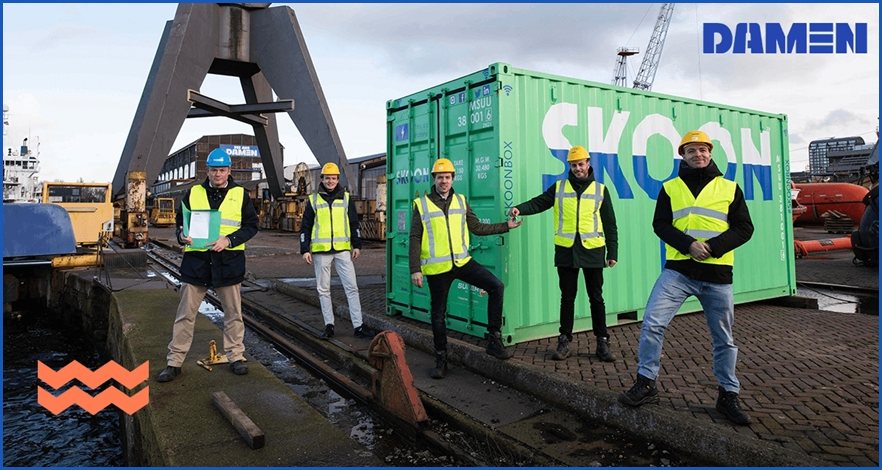
The Skoonbox was unveiled during the World Port Days in 2018 and has since been extensively developed. The battery container contains 314 lithium batteries, good for 638 kWh of sustainable energy. In recent years, the Skoonbox has been used for numerous applications in the Amsterdam port area. For example, by placing the Skoonbox in a clearing barge, a floating battery has been created that has supplied green energy to various types of ships.
“The Skoonbox and subsequent clean energy systems offer us many opportunities to reduce our ecological footprint and that of our customers,” says Vincent de Maat of Damen Shipyards Group. “It is a sustainable replacement for diesel generators, but can also be used as a green form of shore power, so that ships moored at our repair yards can switch off their onboard engines. That saves a lot of emissions.”
Digital platform
“Our focus is on the development of Skoon Sharing, the software platform that brings together both local and international supply and demand for mobile, sustainable energy solutions,” explains Peter Paul van Voorst tot Voorst, CEO and founder of Skoon Energy. “The experience with the Skoonbox has provided us with an enormous amount of indispensable data and insights. As part of our long-term vision, we are committed to not being hardware owners. Our strength lies in developing customer-friendly and commercially scalable software and AI. In this way we realize easy access to clean energy, anywhere.”
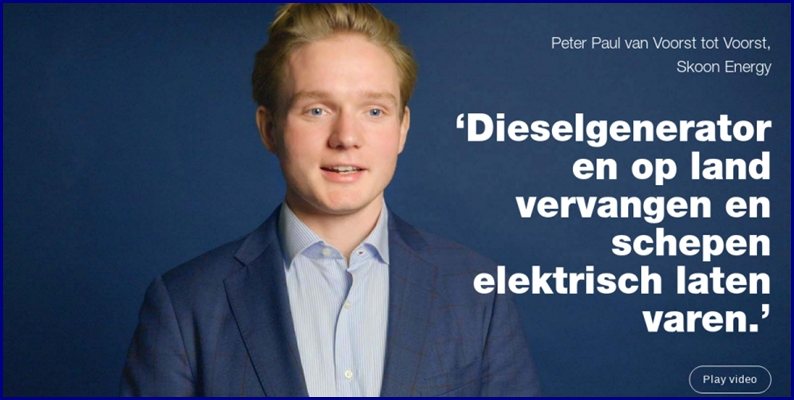
Damen Marine Components: turnkey steering gear for new coasters
Damen Marine Components (DMC) has been awarded the contract for Optima nozzles, plug & play Piston-type steering gear and TIMON flap rudders for four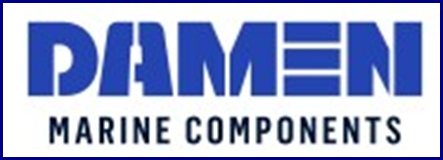 coasters built by Thecla Bodewes Shipyards (TB Shipyards). What is special is that the steering gear for these ships will be supplied ready-to-use (plug-and-play), which saves a lot of time during the final installation on board.
coasters built by Thecla Bodewes Shipyards (TB Shipyards). What is special is that the steering gear for these ships will be supplied ready-to-use (plug-and-play), which saves a lot of time during the final installation on board.
Damen Marine Components is supplying various systems on behalf of Thecla Bodewes Shipyards for the four identical coasters, which will measure 118 x 14.3 x 6.2 metres. Most striking are the Van der Velden® Piston-type steering systems with which the ships are provided. DMC will build these steering machines in its own workshop in Hardinxveld-Giessendam.
The complete steering engine on a foundation, including starter boxes, cylinders and all other necessary parts, is then lifted on board at the TB Shipyards yard in the steering engine room and connected to the rudder. Installation therefore takes only a fraction of the time that would have been required if everything had to be installed separately.
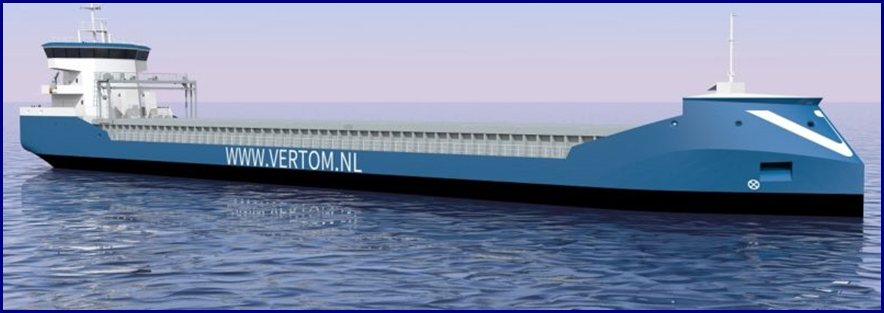
“A plug-and-play version was chosen in order to be able to deliver and install the steering gear very quickly and efficiently,” says Leo van Zon, Area Sales Manager at DMC. “By building components as efficiently as possible on a single frame and testing them in your own workshop, a complete product of high quality and functionality is created. This saves time during the outfitting during the installation, which is usually carried out by the yard. There is simply not much that can go wrong with the installation of a plug-and-play steering engine, which can have a positive effect during outfitting, but also during the life of the ship.”
Collaboration DMC-Thecla Bodewes
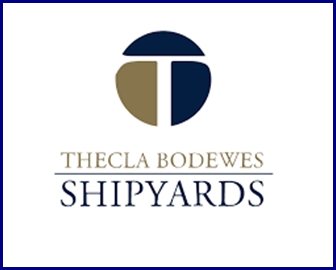 As a specialist supplier in the field of steering and rudder technology, DMC has been working to our full satisfaction for years with TB Shipyards, which has locations in Harlingen, Kampen and Meppel. Complete steering systems have also been supplied in the past for new construction projects, including push boats, seagoing and inland vessels.
As a specialist supplier in the field of steering and rudder technology, DMC has been working to our full satisfaction for years with TB Shipyards, which has locations in Harlingen, Kampen and Meppel. Complete steering systems have also been supplied in the past for new construction projects, including push boats, seagoing and inland vessels.
“We know what we have in common,” says Emiel Mocking, Head of Newbuilding at Thecla Bodewes Shipyards, about the partnership with Damen Marine Components. “DMC thinks along with us and provides the customization we need. Again, by supplying equipment in the most efficient form as plug-and-play. This allows us to save a lot of time in this project, without compromising quality.”
Runtime and other DMC systems
The new project has a planned duration until the end of 2023, when all coasters are expected to be delivered and commissioned.
In addition to the Van der Velden® Piston-type steering systems, DMC also equips each coaster with the Van der Velden® TIMON flap rudder system and the Optima nozzle. The Optima tube offers excellent forward and reverse thrust and an extremely strong profile. For control and monitoring, DMC supplies the complete FU system and BOSS™ Alarm Monitoring System (AMS).
Damen Shipyards director appointed as Minister of Economic Affairs
 Florin Marian SPĂTARU, who until his appointment held the positions of CFO and Director HR & Corporate Affairs at Damen’s sites in Galati and Mangalia, has been appointed Minister of Economic Affairs in the new government.
Florin Marian SPĂTARU, who until his appointment held the positions of CFO and Director HR & Corporate Affairs at Damen’s sites in Galati and Mangalia, has been appointed Minister of Economic Affairs in the new government.
His background will undoubtedly have played a role in this. Nyenrode is also mentioned in his CV.
He was nominated by the ruling party PSD.
Radiography of a moment with strategic implications
France’s military rapprochement with Romania and the launch of the great corvette contract. A few things to keep in mind.
France or the United States? Military ships built in the country or bought from abroad? A new G2G contract? A decision with strategic impact that today weighs on the shoulders of the Ministry of Defense, this is because Romania has put its own stick in the wheel – it has not been able to decide for six years what it actually wants and to sign a contract, and the auction for corvettes it has been extended unauthorized for a long time and now it seems to be really stuck. At a time when the situation on the Black Sea is more unstable than ever and the military needs of the Romanian naval forces are critical, postponing a decision indefinitely could be crucial.
Some key moments taking place today:
– January 13 – Deadline until all bidders in the Corvette auction were required to reconfirm their bids submitted in 2018, after the Ministry of National Defense was unable to reach an agreement with Naval Group on the signing of the contract in 2021 (details below). Both Naval Group and runner-up Damen confirmed to MApN that it is sticking to its offer.
January 17 – Secretary of State at the Ministry of Defense of the Ministry of Defense Policy, Planning and International Relations Simona Cojocaru is awarded the insignia of Knight of the National Order of Merit of the French Republic by the French Ambassador to Romania.
January 18 – French Ambassador to Romania Laurence Auer pays an official visit to the government where she meets Prime Minister Nicolae Ciuca.
January 19 – French President Emmanuel Macron announces that France is ready to send military troops to Romania as part of NATO missions.
– January 21 – The deadline within which the association between Naval Group and Constanţa Shipyard must communicate to the Ministry of National Defense whether it will proceed with the contract signing based on the submitted bid.
– January 31 – Deadline within which the Ministry of National Defense must resolve the issue of the signing of the contract for corvettes.
Corvettes for Romania – a contract that has not been signed. Why?
Although more than three years have passed, the army alone fails to sign the contract for the purchase of four new corvettes built in Romania and for the modernization of the two Type 22 frigates equipped by the naval forces .
In 2019, after an even longer tender, the Ministry of National Defense awarded the contract to the Naval Group – Constanța Shipyard, which submitted a bid of 1.2 billion euros, with only 50 million euros for the Damen group, which is Romania has two shipyards in Galați and Mangalia. The shipyards where it produces ships for export, including military ships.
- Naval Group offered the Gowind 2500 with CODLAD hybrid diesel-electric propulsion and European armament solutions with MBDA missiles: VL Mica anti-aircraft missiles and Exocet anti-ship missiles. Bid price: 1.2 billion euros.
- Damen has offered the Sigma 10514 Corvette with CODOE hybrid diesel-electric propulsion with US armament solutions: Boeing Harpoon anti-ship missiles, Raytheon anti-aircraft missiles, General Dynamics sonar and Thales tactical system. Price offered (according to sources): 1.25 billion euros.
The offer from the French Naval Group was surprising, especially in terms of the price considered quite low in the industry, as the Gowind model is considered not only very modern, but also quite expensive. This is especially true because Naval Group does not have a shipyard in Romania like its competitors.
After several Damen appeals were settled and rejected by the courts, the Defense Ministry was in a position in 2021 where the contract with Naval Group could practically sign, but the French company would not have been so willing to initial the agreement.
According to market sources consulted by HotNews.ro, the price offered was very tight and with no leeway. Furthermore, the price increases for building materials in recent years and the very tight delivery schedule of ships were an objection. Also the obligation to build them all in the country and the clauses and very hard contracts would have prevented the signing of the contract.
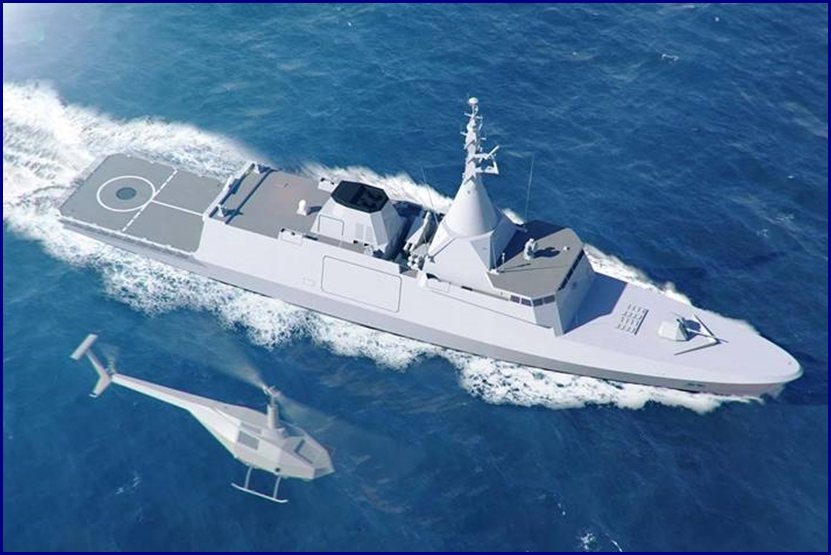
PHOTO – Gowind 2500 Ship / Source: Naval Group
In addition, according to the same sources, there would have been disagreement about the realization of investments in the Constana Shipyard in order to be able to start the construction of modern military ships within the Naval Group association with the Constanța Naval Shipyard.
And in the past, there were many rumors that such a contract would pose major logistical problems: from the technologization of the site to the hiring and professionalization of the necessary personnel, all within an extremely tight schedule – with the first vessel due within three years. be completed and all four in seven years. These agreements should be recorded when the contract is signed.
On the other hand, the French builder Naval, together with the Constanța Shipyard, have repeatedly emphasized that there are no problems with production capacity and that the shipyard is equipped and prepared for the transfer of technology to build the ships.
Turning point
The Turning Point – What will the Defense Ministry do after years and years of being lost and no ships built yet?
However, as the contract was not signed in 2021, the Ministry of National Defense has set a deadline until the end of January to resolve the issue, as the much-needed acquisition for the situation of the Romanian naval forces in the Black Sea has been dragging on for too long. (the first attempt to buy corvettes was in 2016).
Until January 13, the Ministry of Defense asked the auctioneers to reconfirm their bids. Both Naval Group and second place Damen confirmed their bids.
Sources close to the shipbuilder Damen from Galați told HotNews.ro that Damen’s decision to extend its offer was a strategic one and also aims to save the Mangalia shipyard, even though the market conditions are currently making it very difficult to to fit.
Practically speaking, under these circumstances, Damen would assume a minimal profit or even lose the current contract, only to ensure a work front at the Mangalia yard for military projects with Romania, a start of a collaboration that could last decades from now, including other naval projects of the Romanian Armed Forces.
Until January 21, the Ministry of National Defense is waiting for clarification from the Naval Group and the Constanța Shipyard, whether they will sign the contract in the terms of the tender submitted and with which they won the tender. Theoretically, if Naval Group refuses to sign the contract, from a procedural point of view, the Defense Ministry should go to the next bidder, Damen.
In recent days, however, we have seen a series of diplomatic gestures and statements (above) that could pressure the Defense Ministry to delay a sharp decision in this matter if a pending contract with Naval Group cannot be signed.
It should be noted that the President of France, who is on the eve of the presidential election in April, is under pressure on French military exports, especially after the failure of Australia’s century-old submarine contract. It should be noted that in the case of that contract, Naval Group occupied a middle position.
What Scenarios Are There If The Corvette Auction Falls – G2G Contracts, But With Whom?
If the current corvette tender process were somehow canceled by the Ministry of National Defense, the military could switch to a new formula for outsourcing the works. The most appropriate would be the government-government agreements.
Of course, we can discuss a G2G agreement with France here, with the same builder with whom the original contract could not be signed, but on different grounds: a larger budget and possibly with ships built wholly or partly in France.
In this case, while the Romanian naval forces would theoretically end up with much-needed ships (even on an accelerated calendar), on the economic side, Romania would lose the opportunity to build ships in the country. Of course, some phases of construction or, most likely, maintenance during the lifetime of the ships can be put on the table at a shipyard in Romania as a consolation …
Another possible scenario would be to enter into a G2G agreement with the United States of America, especially considering that such contracts with the US have been the most successful in recent years and have always been preferred by the authorities in Bucharest. In addition, Romania has recently been granted “Dependable Undertaking” status by the US, which means that contracts for the purchase of military equipment can now be concluded without the need for an advance.
Romania has shown a closer relationship with the United States in recent years, signing billions of euros in inter-government contracts, while French defense companies have blamed the lack of open procedures for military procurement.
HotNews.ro has already written that in such circumstances, the “Australian scenario” applied in Romania is not an issue to be imagined. Especially since Romania has already unequivocally decided to buy NSM anti-ship missiles with coastal launchers directly from the US, a G2G contract – a type of anti-ship missiles that were not in the Naval Group’s offer of Gowind corvettes.
In such a scenario, it is possible that the US outsources the works on the ship (as a platform) to Damen, which has two shipyards in the country, and can build and deliver the ships on time. The US would come with all equipment and weapons, including other US companies such as Raytheon (already involved with Romania in Patriot and NSM contracts), Boeing, General Dynamics (involved in the Piranha 5 contract) or Lockheed Martin (involved in the HIMARS contract).
If it is possible that G2G will focus with the US on the purchase of ships already built and that the US is willing to sell to Romania. For example, the US has decommissioned the first Freedom-class vessels of the Litoral Combat Ship type and will decommission them after only a few years, comparable in terms of displacement to the corvettes desired by Romania.
Freedom class LCS ships have been operational since 2008-2012 and are now being withdrawn because they no longer meet US requirements, but also because they would require some additional and costly work to fix some of the reliability issues that related to motorized and dispatched. In this case, in addition to these non-negligible costs, the ships must also be technically adapted to Romania, including in terms of armament. In short, it does not offer a reasonable alternative.
The advantage of such an acquisition would be the speed with which the new ships would practically enter the endowment of the Romanian naval forces, as well as the greater interoperability with the American armed forces, but the disadvantages could be significant: the ships would no longer be built in the country to address reliability issues, including during the lifetime of ships.
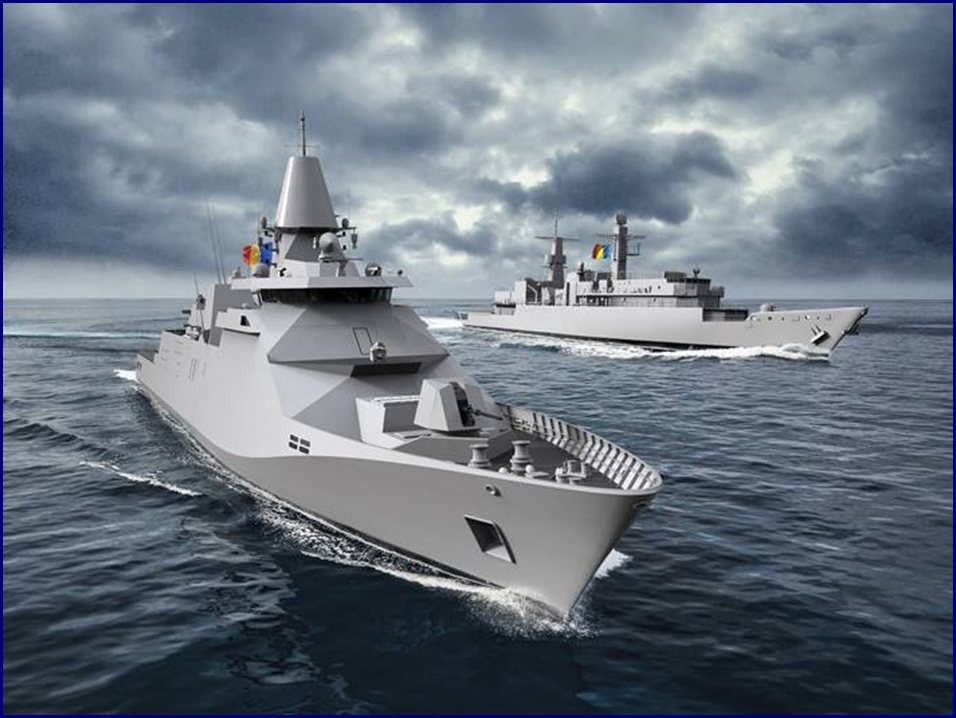
Photo: SIGMA 10514 corvette and modernized T22R frigate / Source: Damen
Another third possible scenario, would be to start an acquisition with direct allotment, as was attempted in 2015. Then the government led by Cioloș concluded from a survey that analyzed the market that Damen is the only shipyard in the country that continuously makes military ships and also the only one that could and can build the corvettes necessary for Romania in the short term.
Then the de facto government headed by Liviu Dragnea came and canceled that procedure and instead started the current tender which has so far gone nowhere. If the direct acquisition had been allowed to go ahead in 2015, Romania could have already received the first corvette in 2020, and now almost all ships would have been equipped already.
At present , Romania on the Black Sea has been fully discovered and the naval forces are the weakest equipped branch of the army .
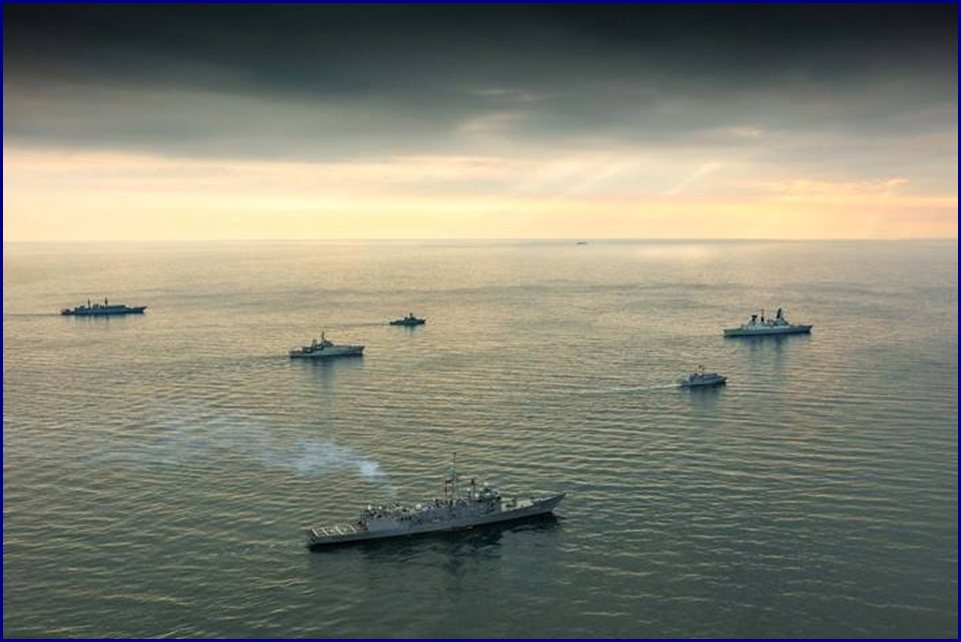
Photo: NATO military exercise in the Black Sea (source: NATO)
There are currently no modern means of anti-aircraft, anti-missile or anti-ship defence, and the only armed platforms are ships of Soviet origin, with facilities and equipment already obsolete.
Editorial DRN Newsletter: Two messages have already appeared in which a relationship with the aforementioned can be made: “How strong is the Russian Black Sea fleet after the extensive modernization program of recent years” and “Former head of American troops in Europe – Black Sea most likely future battlefield”
Source: Hotnews 21.1.2022 – Victor Cozmei
Energy sector
Romania will have a surplus of one billion cubic meters of natural gas next winter
Romania will have a surplus of one billion cubic meters of natural gas next winter, which will come from the Black Sea, from the perimeter where it exploits the Black Sea Oil & Gas, said Energy Minister Virgil Popescu.
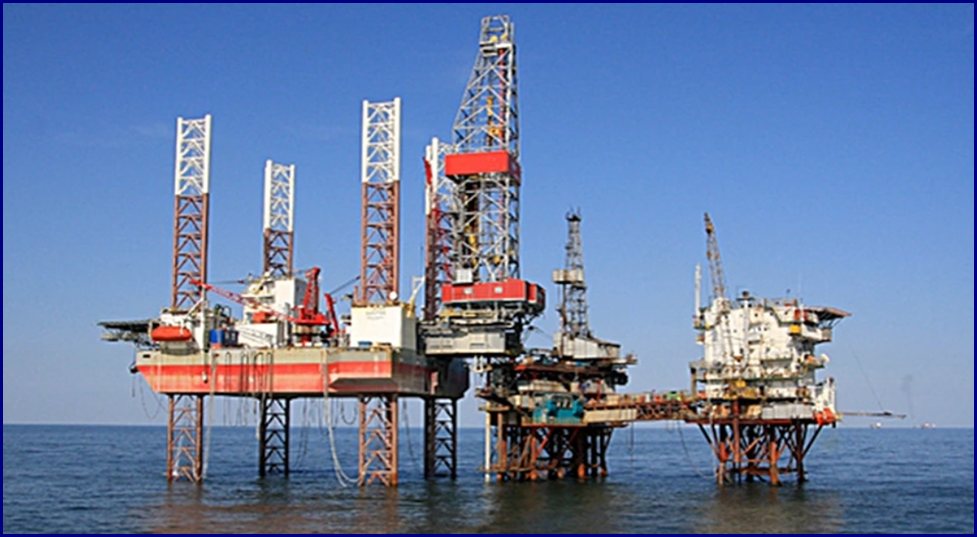
“If Romania had access to Black Sea gas by now” we were completely independent, we were even a natural gas supplier, a regional supplier of energy stability. Instead, Romania has another perimeter and it is almost ready, which is the perimeter where Black Sea Oil & Gas operates. We have spoken to them and this spring the first gas will come from the Black Sea, so Romania will have another billion cubic meters of surplus coming from the Black Sea next winter. This will further reduce Romania’s dependence on Russian gas,” Virgil Popescu told B1 TV.
Black Sea Oil & Gas is backed by two globally renowned investors, The Carlyle Group and the European Bank for Reconstruction and Development (EBRD). The Carlyle Group acquired the company through its Carlyle International Energy Partners Fund (CIEP) in August 2015 and the EBRD became a minority shareholder in November 2017.
He also indicated that Romgaz will also invest in the Caragele field in Buzău County, where the first gases are most likely to come from in 2023.
 “We also have onshore deposits inland, especially the Caragele field in the Buzău area, but the deep field in Caragele, where Romgaz starts investing and now starts drilling again. And there we have a rich deposit and where we will probably be talking about the first gases from this deposit in 2023. We are clear about what we want to do in the gas field, which is a very sensitive area closely related to the regional geopolitical games and what we are focusing on so that we can will have no more waves in the coming period,” added the head of Energy.
“We also have onshore deposits inland, especially the Caragele field in the Buzău area, but the deep field in Caragele, where Romgaz starts investing and now starts drilling again. And there we have a rich deposit and where we will probably be talking about the first gases from this deposit in 2023. We are clear about what we want to do in the gas field, which is a very sensitive area closely related to the regional geopolitical games and what we are focusing on so that we can will have no more waves in the coming period,” added the head of Energy.
Regarding the supply of fuels, given the high oil prices, Virgil Popescu said he does not believe Romania will have such problems. “Romania is an oil producer, but also imports oil from Kazakhstan. KazMunaiGaz gets its oil from Kazakhstan and we are from this point of view less vulnerable than other countries, because we are a country that produces both oil and gas, and the oil price follows world prices, I don’t think we will have any problems with the fuel supply.
The Caragele deposit is estimated at about 30 billion cubic meters and the Neptun Deep perimeter at 42-84 billion cubic meters. The estimated reserves in the perimeter of Midia, where Black Sea Oil & Gas operates, are approximately 20-30 billion cubic meters.
Sector Environment
WWF sounds the alarm: Romania will not stop illegal logging
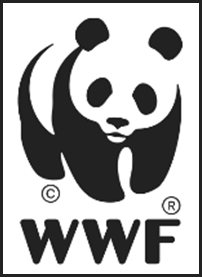 Today, the Romanian forests are on the brink of losing another battle, this time over the European funds within the National Strategic Plan. Only 0.46% of the money is available for forest conservation and sustainable forest management. WWF Romania is sounding the alarm that at least 10% is needed to implement what Romania has adopted towards the European institutions. The decision rests with the Ministry of Agriculture, which has no direct interest in forest conservation, while the Ministry of the Environment, which includes forests, leaves the matter unattended.
Today, the Romanian forests are on the brink of losing another battle, this time over the European funds within the National Strategic Plan. Only 0.46% of the money is available for forest conservation and sustainable forest management. WWF Romania is sounding the alarm that at least 10% is needed to implement what Romania has adopted towards the European institutions. The decision rests with the Ministry of Agriculture, which has no direct interest in forest conservation, while the Ministry of the Environment, which includes forests, leaves the matter unattended.
Romania continues to face problems related to illegal logging, the preservation of ancient forests and the management of protected areas. Though it owns two-thirds of Europe’s pristine forests, it doesn’t seem interested in protecting them. Of the more than 6.5 million hectares of forests, less than 3% is protected against any form of logging.
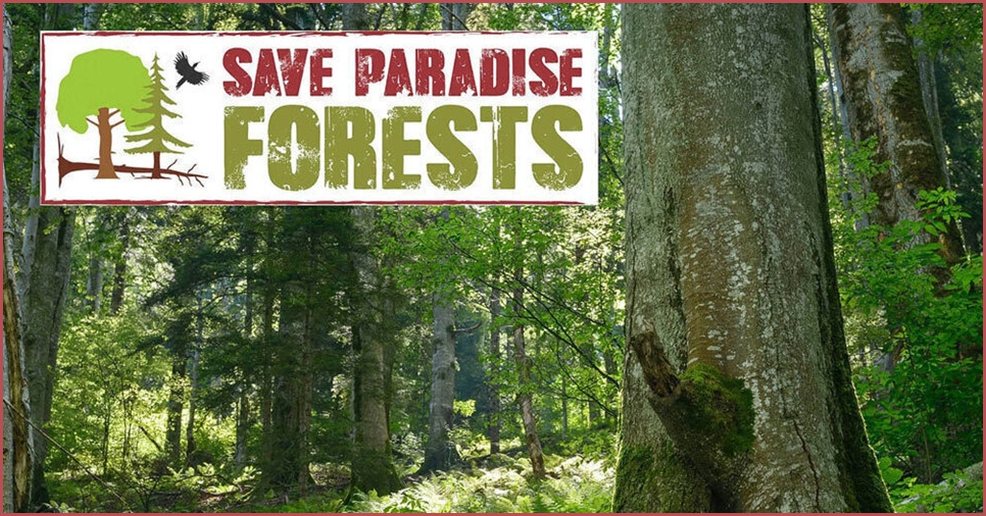
WWF Romania considers this percentage too low and should be at least 10%. Otherwise valuable forest ecosystems remain unprotected. Therefore, it launched a petition asking the state for support for forest conservation.
 This is a problem that affects all of us, whether we work in a forest-related area or not, whether we live in the countryside or just like to take a walk in the forest. We all need nature, water, fresh air and want our children to inherit nature as we know it. Now is the time to find solutions to many problems and needs related to the forests, whether we are talking about illegal logging, the destruction of forest habitats, the superior use of wood harvested from forests or the protection of valuable forests.
This is a problem that affects all of us, whether we work in a forest-related area or not, whether we live in the countryside or just like to take a walk in the forest. We all need nature, water, fresh air and want our children to inherit nature as we know it. Now is the time to find solutions to many problems and needs related to the forests, whether we are talking about illegal logging, the destruction of forest habitats, the superior use of wood harvested from forests or the protection of valuable forests.
We will not be able to solve these problems without investing in conservation efforts, without compensating owners who face restrictions on logging, without supporting a green and fair transition for local timber-dependent communities. We need support.
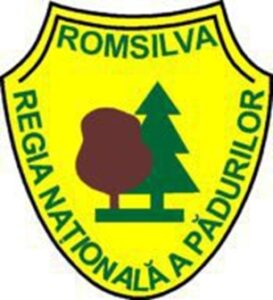 The sustainable forest management reform, which is so necessary, needs resources. Increasing the forest cover and its resilience to climate change or including more forests in a strict protection regime cannot be done on paper alone. It is important to preserve the forests, but we also have to offer an alternative to forest owners or to local forest dependent communities. Otherwise, they are “pushed” to enter a gray or even black area.
The sustainable forest management reform, which is so necessary, needs resources. Increasing the forest cover and its resilience to climate change or including more forests in a strict protection regime cannot be done on paper alone. It is important to preserve the forests, but we also have to offer an alternative to forest owners or to local forest dependent communities. Otherwise, they are “pushed” to enter a gray or even black area.
Conservation works for the Romanian forests need funding, otherwise every conservation idea is just a beautiful dream and every strategy remains impotent. Investigative journalists also question the role played by Romsilva – the Romanian equivalent of the Dutch Forestry Commission.
“WWF Romania has raised the alarm with the Romanian government and as many people as possible need to express their concerns about the future of our forests.
Logistics Sector
Share Mobility Package can be deleted
We are on the eve of the entry into force of the second phase of the Mobility Package, a phase that will have considerable consequences for the transporter, especially in the field of cabotage and intermodal transport.
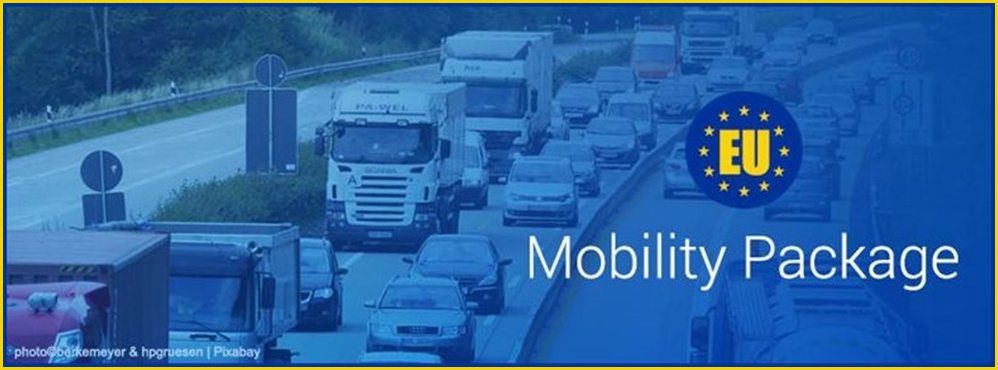
As of February 2, border crossings must be registered and the new posting rules will also come into effect. Just under three weeks later, the formidable ‘return-home-vehicle-rule’ will be introduced. These are rules that should ensure an improvement in road safety, equal working conditions for drivers and fairer competition. However, since the day the package of measures was announced, there has been criticism of the practical feasibility of the package of measures. Or rather, the impracticability.
There are also serious doubts as to whether the measures will have the intended effect. The initiators aim to promote protectionist policies in many EU countries.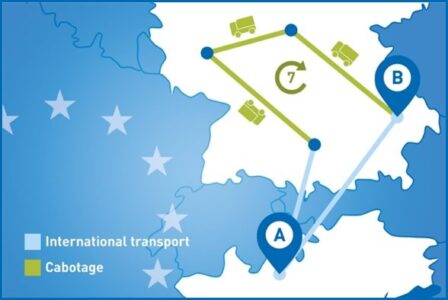 Member States, but in my view the new rules for cabotage and intermodal transport completely miss the point. From 21 February, a ‘cooling off’ period of four days will apply to any form of cabotage. After a completed cabotage, the vehicle may not carry out cabotage in the Member State concerned for four days. International transport is still possible. In addition, from that date, Member States may provide that initial and final routes in the context of intermodal transport will also be subject to the cabotage regime. Many member states will make use of this, including the Netherlands.
Member States, but in my view the new rules for cabotage and intermodal transport completely miss the point. From 21 February, a ‘cooling off’ period of four days will apply to any form of cabotage. After a completed cabotage, the vehicle may not carry out cabotage in the Member State concerned for four days. International transport is still possible. In addition, from that date, Member States may provide that initial and final routes in the context of intermodal transport will also be subject to the cabotage regime. Many member states will make use of this, including the Netherlands.
Frankly, that last one surprised me. A large part of the domestic transport from the port of Rotterdam is carried out by so-called ‘white number plates’. The exemptions for intermodal transport allowed them to cabotage in the Netherlands without restriction. An eyesore for many domestic carriers, it is said. On the other hand, it is highly questionable whether there will soon be sufficient Dutch capacity to get these journeys out of the seaport. In the long run the market will do its job, but certainly in the beginning English situations cannot be ruled out.
In addition, after Brexit, the United Kingdom no longer fell under the EU exemptions for intermodal transport. As a result, there has been a two-way cabotage restriction in the UK since 2021, although Prime Minister Johnson has introduced an easing of cabotage rules since October 28. The background to this is an acute shortage of road transport capacity. There are no restrictions on the number of cabotage trips during a period of 14 days. This extension applies (currently) until April 30, 2022.
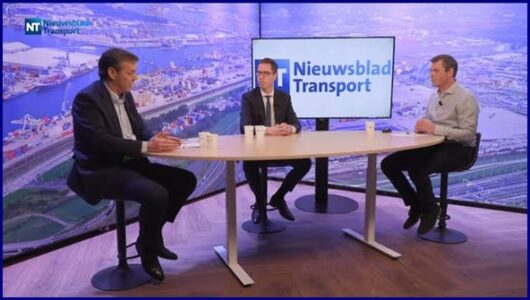 A lot will therefore change for the transporter, although the coffee grounds will continue to see how hot the soup will be eaten. The criticism has not been kind and Brussels has no choice but to take a closer look at a number of measures. In my view, some of them can be deleted. To start with, the return obligation for vehicles and certainly the tightened cabotage rules. After all, Brussels is concerned with improving the working conditions of drivers and putting an end to the distortion of competition in road transport. In my humble opinion, these objectives are already being achieved with the revised posting rules.
A lot will therefore change for the transporter, although the coffee grounds will continue to see how hot the soup will be eaten. The criticism has not been kind and Brussels has no choice but to take a closer look at a number of measures. In my view, some of them can be deleted. To start with, the return obligation for vehicles and certainly the tightened cabotage rules. After all, Brussels is concerned with improving the working conditions of drivers and putting an end to the distortion of competition in road transport. In my humble opinion, these objectives are already being achieved with the revised posting rules.
Source: Nieuwsblad Transport – Kevin Vierhout( kvierhout@vallenduuk.nl )
Industry Food
Bucharest, one of the vegetarian hotspots in Europe
 In 2021 there was a 28% increase in participation in Veganuary – with more than half a million people worldwide looking to change their diet and reduce their meat intake in January last year, whether through veganism or vegetarianism.With Veganuary 2022 to around the corner, experts at Uswitch.com wanted to find the best European capitals for vegetarians to live in.
In 2021 there was a 28% increase in participation in Veganuary – with more than half a million people worldwide looking to change their diet and reduce their meat intake in January last year, whether through veganism or vegetarianism.With Veganuary 2022 to around the corner, experts at Uswitch.com wanted to find the best European capitals for vegetarians to live in.
Bucharest has the sixth highest-rated vegetarian restaurants in Europe
With an abundance of choice for vegetarian and vegan diets, Bucharest has the sixth highest-rated vegetarian restaurants in Europe, with an average rating of 8.73/10 – a score 4% higher than other ‘food capitals’ such as Rome (8.41 / 10).
Vegetarian Hotspots of Europe
With an average vegetarian rating of 8.85/10, Belgrade is the European capital most suitable for vegetarians! The average price of a meal in this Eastern European capital is just €15.98, 32% cheaper than Malta’s second largest capital, Valletta. With a total of 381 restaurants to choose from, vegetarians in Belgrade will be spoiled for choice.
The Maltese capital Valletta comes in second and just short of first place with an average vegetarian restaurant rating of 8.84/10 . Despite the average price of a meal being slightly more expensive than Belgrade, the Mediterranean capital has 1201 suitable restaurants to choose from, the 11th of all capitals analysed!
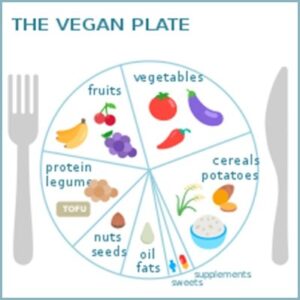 With 264 suitable restaurants to their name, Zagreb , the capital of Croatia , is in third place with an average vegetarian rating of 8.78 out of 10. Despite the many options, the average price for a meal at one of these highly regarded vegetarian restaurants is the seventh most expensive in Europe, at €32.48.
With 264 suitable restaurants to their name, Zagreb , the capital of Croatia , is in third place with an average vegetarian rating of 8.78 out of 10. Despite the many options, the average price for a meal at one of these highly regarded vegetarian restaurants is the seventh most expensive in Europe, at €32.48.
Albania’s capital, Tirana, ranks fourth with an average rating of 8.76/10 for their vegetarian restaurants. Not only does this capital city offer some of the best vegetarian restaurants on the entire continent, but it’s also Europe’s highest-rated capital for brunch restaurants, scoring a whopping 8.95/10.
Helsinki, Finland, is the lowest-rated European capital for vegetarian restaurants
With a score of 8.08/10 for their vegetarian restaurants, Helsinki , the capital of Finland, is in last place for their vegetarian restaurants. Despite 11% of their population being vegetarian, the fourth highest vegetarian population in Europe, the restaurants are not up to date compared to the rest of the continent.

Political developments and government decisions
Completion of Romania’s accession to Schengen is paramount
The completion of Romania’s accession to Schengen is “of paramount importance,” President Klaus Iohannis said at the annual meeting with the heads of diplomatic missions accredited in Bucharest.
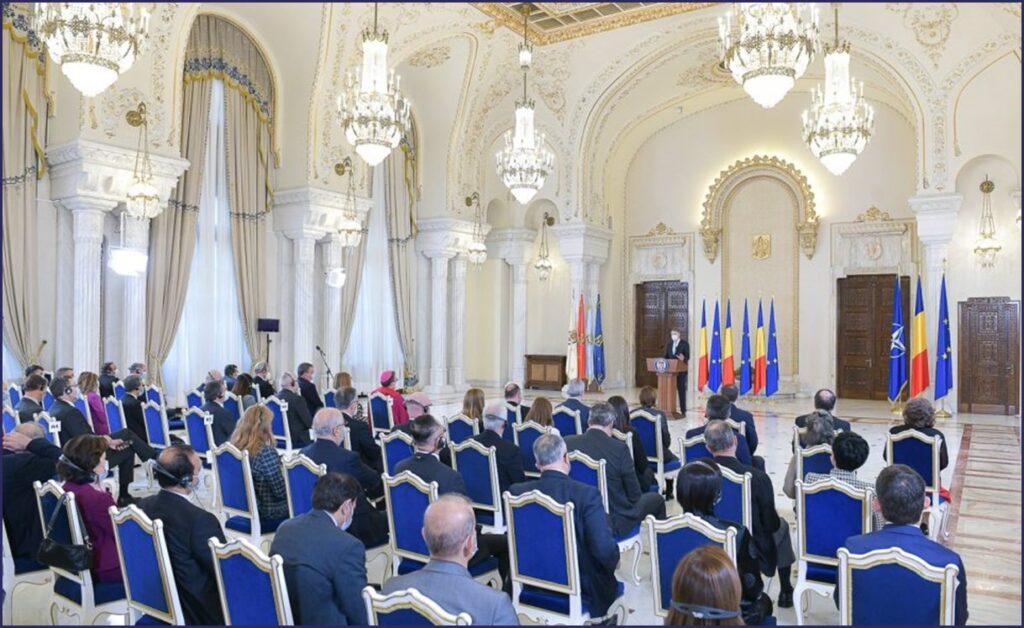
“Romania is already contributing and remains committed to contributing to a secure and efficient Schengen area. From this point of view, the completion of Romania’s accession to Schengen is of utmost importance. Another key priority is to close the Romanian supervision through the Cooperation and Verification Mechanism to assess progress made in the area of the independence and efficiency of the judiciary. The Romanian authorities are fully committed in this regard,” the president said at the Cotroceni presidential palace.
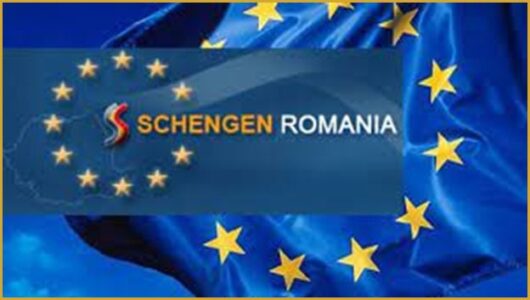 He further pointed out that “a fully integrated Schengen area is essential for strengthening the internal market.”
He further pointed out that “a fully integrated Schengen area is essential for strengthening the internal market.”
Recalling that this year marks the 15th anniversary of Romania’s accession to the European Union, Iohannis emphasized that “during this period Romania has fundamentally changed – a clear confirmation of the transformative power of the European project. Respecting and promoting European values – democracy, rule of law, fundamental rights, market economy – define Romania today.”
We are concerned about our security situation in the neighbourhood, concrete de-escalation necessary
Romania is concerned about the security situation in its neighborhood caused by the “mass” deployment of Russian troops near Ukraine and its implications for Euro-Atlantic stability, President Klaus Iohannis said at the annual meeting with Romania’s staff . the diplomatic missions accredited in Bucharest, and emphasized the need for concrete de-escalation on the ground.
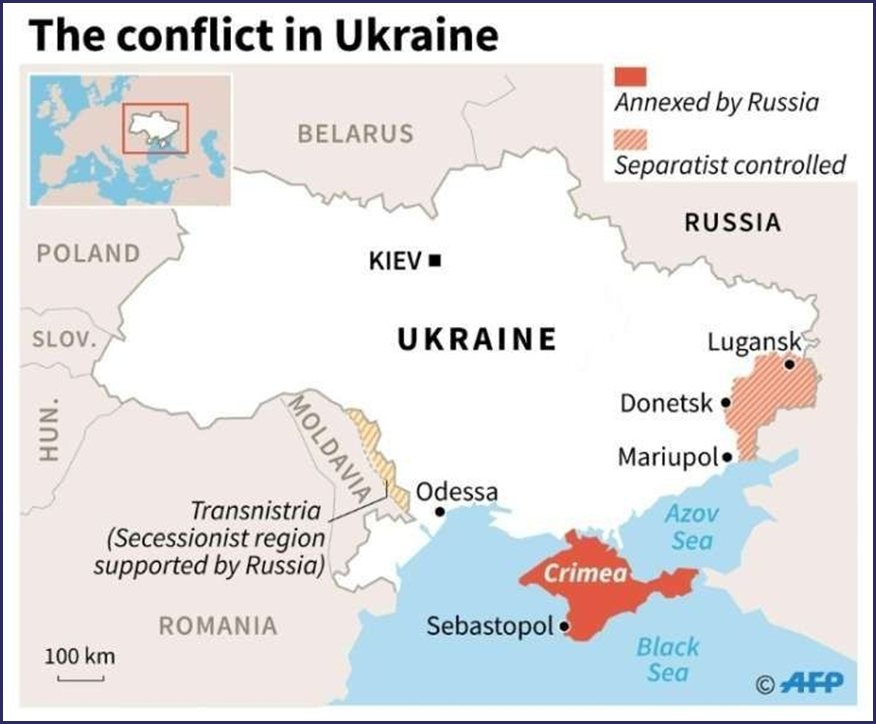
“Romania is actively involved in the strategic interest processes at NATO and EU level regarding developments in the Eastern and Black Sea neighbours. We are, of course, concerned about the security situation in our neighborhood caused by the massive deployment of Russian troops near Ukraine and its implications for Euro-Atlantic stability,” the president said at the meeting at Cotroceni Palace.
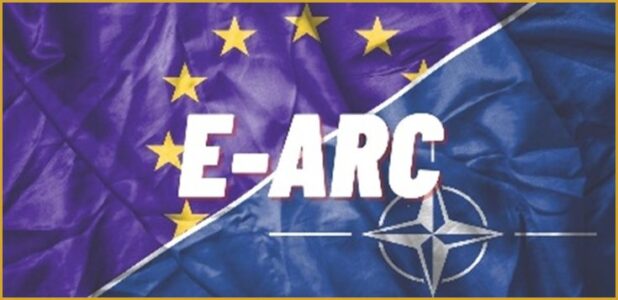 He recalled that an important interaction is taking place in the framework of the NATO-Russia Council, which complements the Russian-US strategic stability dialogue at the beginning of the week, on which the Romanian authorities were informed in real time. He mentioned in the context the objective of the full operationalization of the Euro-Atlantic Center for Resilience in Bucharest.
He recalled that an important interaction is taking place in the framework of the NATO-Russia Council, which complements the Russian-US strategic stability dialogue at the beginning of the week, on which the Romanian authorities were informed in real time. He mentioned in the context the objective of the full operationalization of the Euro-Atlantic Center for Resilience in Bucharest.
Public confidence in the governments that run the world’s democracies has fallen to new levels – poll
According to a global study quoted by Reuters on Tuesday, public confidence in the governments that run the world’s democracies has fallen to negative levels in terms of managing the coronavirus pandemic, but also amid pessimism about the economy.
In contrast, the Edelman Trust Barometer study shows an increase in trust in several autocratic states, especially China, as well as strong levels of trust in the business environment, due to its role in vaccine development and the adaptation of workplace practices. although there are concerns about his commitment to social justice.

“We are having a real collapse in confidence in Democrats,” said Richard Edelman, director of a communications group that surveyed 36,000 respondents in 28 countries on Nov. 1-24 last year.
The biggest drop in confidence compared to previous comparable polls occurred in German institutions last year, down 7 percentage points (46%), Australia by -6 percentage points (53%), the Netherlands by -6 percentage points (57% ) ), South Korea by -5 percentage points (42%) and the United States by -5 percentage points (43%).
By contrast, public confidence in institutions in China rose to 83% (+11 percentage points), the United Arab Emirates (+9.76%) and Thailand (+5.66%).
 The billions of dollars spent by the world’s richest countries to support their pandemic economies have not instilled a lasting sense of confidence, the study suggests.
The billions of dollars spent by the world’s richest countries to support their pandemic economies have not instilled a lasting sense of confidence, the study suggests.
In Japan, only 15% of respondents said their situation and that of their families would be better in five years, with 20% to 40% in most other democracies. In China, however, nearly two-thirds of respondents said they were optimistic about their economic future, and 80 percent of Indians also said they would do better in five years’ time.
According to Edelman, this high level of trust in China is related not only to economic perceptions, but also to the public’s perception of predictability in Chinese policy, including the pandemic.
“I think there’s a correlation between what they do and what they say. For example, they’ve had a better situation with COVID-19 than the United States,” Edelman said.
Romanian electronic identity cards adjustment
Place of birth will disappear on the new cards, but fingerprints will be mandatory in electronic cards. Deadline for introduction and extended validity for certain ages .The place of birth of the holder will be removed from the data entered on the new simple and electronic identity card, according to the changes prepared by the authorities in this regard. The expiry date for the validity of the existing cards is 03.08.2031, when all Romanians should have the new types of cards.
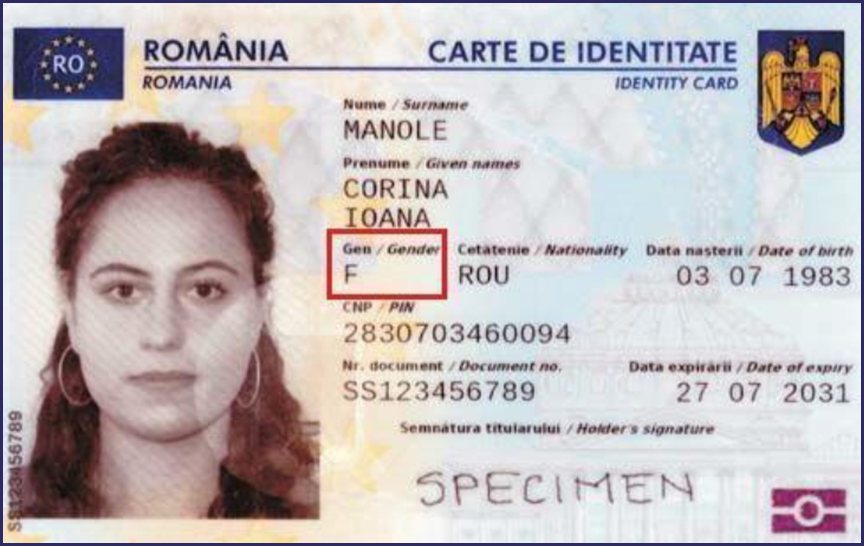
Fingerprints can be registered in digital cards after the age of 12 and all electronic identity cards must contain the holder’s fingerprints. According to the prepared law, until the provision of the technical infrastructure necessary for the circulation of the electronic identity card , the identity card is issued with the current validity, depending on the age of the holder, but not more than 03.08.2031 , is provided in the drafted normative act. The authorities also want to change the terms of the new cards for certain age groups. Thus, from the date on which the technical conditions for issuing the electronic identity card are met, the simple identity card and the electronic identity card are issued: a) Valid for 3 years (instead of 2 years as previously established) for persons between 0 and 14 years of age; b) with a validity of 5 years (instead of 4 years as previously established), for persons between 14 and 18 years of age; c) with a validity of 10 years, after reaching the age of 18; d) valid indefinitely, after reaching the age of 70 (and not after 60, as previously envisaged), for the simple identity card.
Healthcare Sector
New quarantine rules for travelers arriving in Romania
- Vaccinated people who come into direct contact with a confirmed COVID-19 case will be required to quarantine for 5 days, the National Committee on Emergencies (CNSU) decided on Friday. CNSU has changed the rules for quarantine in Romania, after direct contact with a confirmed COVID case or upon arrival in the country.
- Reduction of the quarantine period from 14 to 5 days for people who have been vaccinated or have been sick in the past 180 days.
- reduction of the quarantine period from 14 to 10 days for people who have not been vaccinated or who have not been sick in the past 180 days
- for direct contact of a COVID-19 case – 5 days of quarantine for vaccinated or sick people and 10 days for unvaccinated people.
DRN Newsletter limits messages about Corona
Changes take place so quickly that it is pointless to place this in the newsletter that appears once a month; it has no added value as it did in the initial phase when there was quite a bit of conflicting reporting.
Below are two recent overviews that give you a good and reliable insight into the current situation in Romania and other European countries.
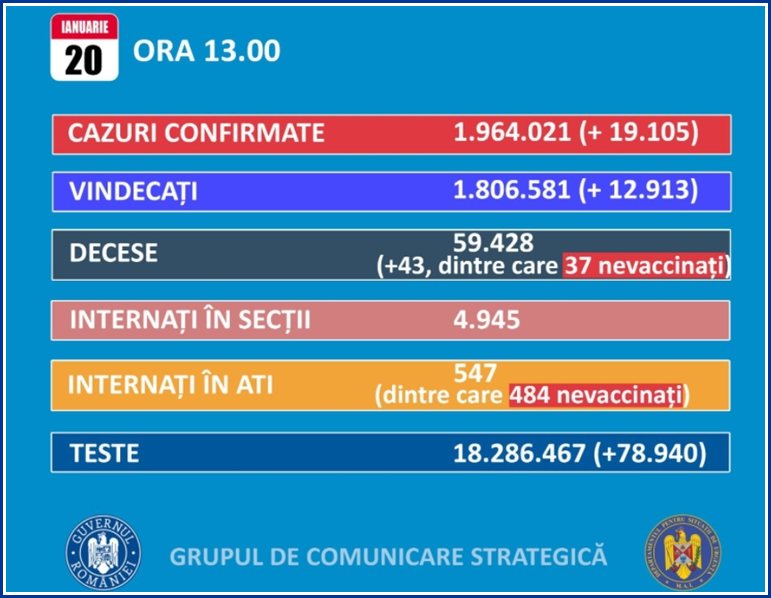
Half of Romania, in dark red on the COVID map of Europe, the biggest concern about the epidemiological situation Half of the Romanian territory is colored in dark red on the COVID map of Europe published on Thursday by the European Center for Disease Control and Prevention (ECDC), which represents the greatest concern about the epidemiological situation. The other half is colored red, level 3 out of 4 worrying, A week ago, on the map published on January 13, the whole country was colored red. The ECDC has identified an epidemiological situation of four degrees, colored according to how worrying the situation is in the different regions of Europe, in green, orange, red and dark red. Almost all other European countries are colored dark red, which is the main concern.
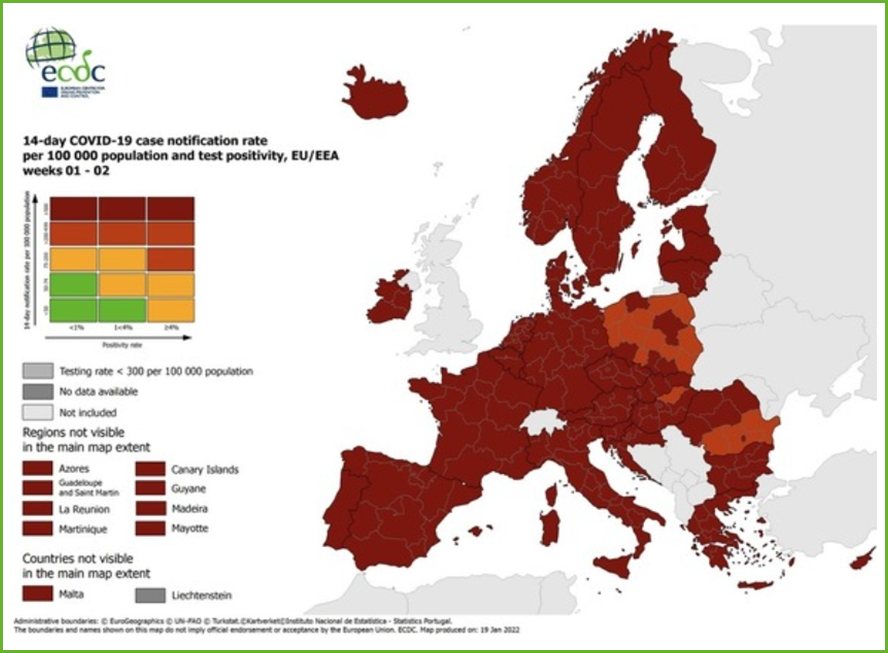
Disclaimer

The newsletter of the Dutch Romanian Network is compiled with great care. The Dutch Romanian Network cannot accept any liability for a possible inaccuracy and/or incompleteness of the information provided herein, nor can any rights be derived from the content of the newsletter. The articles do not necessarily reflect the opinion of the board.
